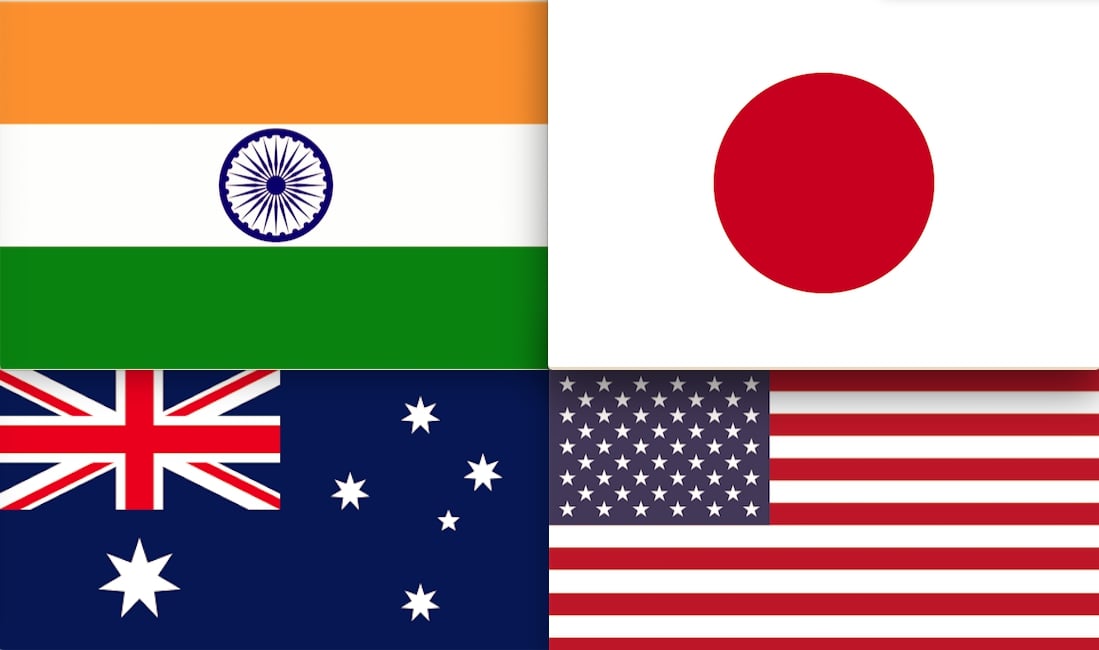The only good that has come out of the coronavirus is that it has woken up the world, especially India, to the threat that China poses.
China’s recent statement that it is “firmly opposed” to the Quad comprising India, the US, Australia and Japan underlines the dragon’s fear of the informal grouping. Moreover, it confirms the efficacy of the coming together of America and the major democracies of the Indo-Pacific. The very fact that Beijing is ranting against the Quad suggests that it is succeeding where other multilateral agencies failed.
Senior Colonel Ren Guoqiang, representing China’s Ministry of National Defence, said at an online media briefing, “Seeking peace, development and win-win cooperation is the trend of the times. Any practice that goes against the trend of the times and satisfies one’s own selfish interests is out of place, unpopular and doomed to fail.” Does Colonel Ren have his own country in mind?
Peace, development, cooperation, etc., are the ideas aggressive nations talk incessantly while planning and executing rapacious plots; it happened when Germany was gobbling up land in Europe in the previous century, beguiling the likes of Neville Chamberlain; it is happening now when Xi Jinping’s China is doing the same. As a bonus, China also spread the coronavirus all over the world, which killed millions, crippled the global economy, and severely affected billions of people, especially the poor.
Yet, Beijing indulges in grandiloquence. As Ren said without a touch of irony, “China is committed to building world peace, contributing to global development and upholding the international order.” Seldom was mendacity so sanctimonious.
While lecturing “the US to shoulder its responsibilities, refrain from making troubles out of nothing, and do more to contribute to regional peace and stability”, he also berated “the US side’s stubbornness to maintain hegemony, pursuit of the law of the jungle, and dangerous misjudgement of China.”
From India’s perspective, the Quad is an extremely important development, for it is the beginning of a mature foreign policy. So far, a toxic blend of good intentions, romantic fantasies, and anti-Americanism passed off as foreign policy. It was called the non-aligned movement (NAM); in conjunction with socialism, it has done more harm to India than anything else.
Logically, NAM should have died soon after the fall of the Soviet Union, but in our country, logic seldom finds expression. Even in the post-Soviet era, America remained, being the engine of capitalism, an imperial or neo-imperial power. The Left hated it; still does. But even parts of the Right do that, for reasons that are ideological, cultural, and social. And this, despite the fact that the Sangh Parivar derives its power and resources from not just middle India but also from the vast diaspora, much of it in America. This explains New Delhi’s flirtations with nebulous groupings like BRICS and with idiocies like Non-alignment 2.0. It needs to be mentioned here that Nonalignment 2.0 also enjoyed the blessings of Sonia Gandhi and Manmohan Singh. Released in New Delhi in February 2012, it intended to generate a new version of nonalignment in the 21st century.
Eight grandees produced a document called Nonalignment 2.0—Sunil Khilnani, Rajiv Kumar (Ficci secretary general at that time and now Vice-Chairman of the Prime Minister-headed Niti Aayog), Pratap Bhanu Mehta, Lt Gen Prakash Menon (Retd), Nandan Nilekani, Srinath Raghavan, Shyam Saran, and Siddharth Varadarajan.
At the time, I had critiqued the document, calling it “Claptrap 2.0”. I wrote that it was “a revivalist endeavour” that was intended “to bring back th[e] golden age” that “nonalignment 1.0” had supposedly ushered in. Nonalignment 2.0, I asserted, was “a hodgepodge of dangerous shibboleths, worn-out clichés, commonplace remarks, irritating pomposity, and wishful thinking”. Many of its weaknesses derived from the Sovietized worldview of Congress Party president, Sonia Gandhi, and the pinkish intellectuals surrounding her.
Such is the influence of the rhetoric that even somebody as different from Congress as the BJP has accepted non-alignment as a policy imperative, if not fait accompli. In May 2016, a journalist from Wall Street Journal had asked Prime Minister Narendra Modi, “The US is very keen on India, the rising power that India is, to be part of, if not an alliance, then at least a grouping that can stand up to some extent to China. Where do you see India taking a position on the global stage?” Modi answered, “There is no reason to change India’s non-alignment policy, that is a legacy and has been in place.”
A great deal has happened since then, the most important being Covid-19. The only good that has come out of the coronavirus is that it has woken up the world, especially India, to the threat that China poses. In fact, it has shaken up New Delhi from its dogmatic and ideological slumbers. Quad, in which India’s role is critical, could not have happened without the shake-up.
Now that the Quad’s efficacy has been established, it is time to formalize it. Further, it needs to be expanded and widened—more democracies should join it and they widen the scope of cooperation. The goal should the replacement of an ineffectual United Nations with a coalition of democracies.
Ravi Shanker Kapoor is a freelance journalist.

